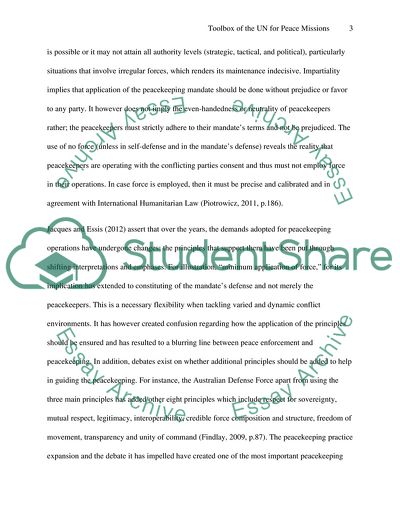Cite this document
(The Toolbox of the UN for Peace Missions Coursework Example | Topics and Well Written Essays - 4500 words, n.d.)
The Toolbox of the UN for Peace Missions Coursework Example | Topics and Well Written Essays - 4500 words. https://studentshare.org/social-science/1875767-the-united-nations-disscuss-the-toolbox-of-the-un-for-peace-missions
The Toolbox of the UN for Peace Missions Coursework Example | Topics and Well Written Essays - 4500 words. https://studentshare.org/social-science/1875767-the-united-nations-disscuss-the-toolbox-of-the-un-for-peace-missions
(The Toolbox of the UN for Peace Missions Coursework Example | Topics and Well Written Essays - 4500 Words)
The Toolbox of the UN for Peace Missions Coursework Example | Topics and Well Written Essays - 4500 Words. https://studentshare.org/social-science/1875767-the-united-nations-disscuss-the-toolbox-of-the-un-for-peace-missions.
The Toolbox of the UN for Peace Missions Coursework Example | Topics and Well Written Essays - 4500 Words. https://studentshare.org/social-science/1875767-the-united-nations-disscuss-the-toolbox-of-the-un-for-peace-missions.
“The Toolbox of the UN for Peace Missions Coursework Example | Topics and Well Written Essays - 4500 Words”. https://studentshare.org/social-science/1875767-the-united-nations-disscuss-the-toolbox-of-the-un-for-peace-missions.


